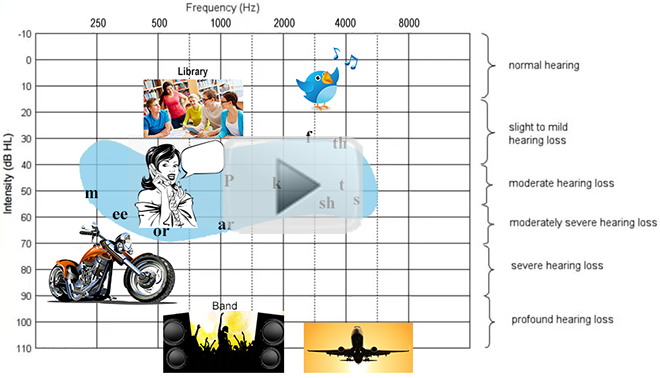
- Apr 22, 2019
Hearing Loss and the NDIS
Introduction
The National Disability Insurance Scheme (NDIS) provides support to people with disabilities, their families and carers. It is jointly governed and funded by the Australian, State and Territory governments. It replaces the previous system of disability care and support provided under the National Disability Agreement.
During the 2007 election campaign, the then opposition Labor Party committed to negotiate a National Disability Strategy with the states and territories, which would canvass, among other issues, 'how to fund, finance and deliver disability services in the future'.
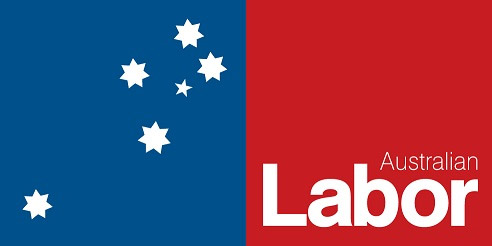
The NDIS is a major reform of disability support in Australia emerging from years of discussions (especially during the period 2007-2011) about problems with the existing disability support arrangements, the need for reform, and proposals for new models of disability support.
Australia 2020 Summit
In April 2008, a submission to the Rudd Labor Government's Australia 2020 Summit by disability advocates, Bruce Bonyhady and Helena Sykes, argued that the cost of caring for people with disabilities 'represents a very large unfunded liability' which would continue to grow significantly.
Bonyhady and Sykes argued that the situation was 'similar to the problem identified in the 1980s, when it was recognised that an ageing population dependent on old age pensions would place an unacceptable burden on taxpayers', and which 'led to the introduction of compulsory superannuation'.
They further argued that:
"The time is right to reform the disability sector: to shift from the current crisis-driven welfare system to a planned and fully-funded National Disability Insurance Scheme that will underwrite sustained, significant long-term improvements in meeting the needs of people with disabilities and their families."
They suggested that the model for an NDIS already existed in the form of various fully-funded no-fault insurance schemes for people injured at work or in motor vehicle accidents in the states and territories. Bonyhady and Sykes proposed that the advantages of such a scheme would be significant.
First, with an insurance model the families of people with disabilities can have confidence that the needs of their family member will be met, reducing stress and risks of family breakdown. Second, a life-time approach to care ensures that early intervention and equipment is available immediately following diagnosis or injury, leading to better and lower cost long-term outcomes. Third, active case management facilitates as normal a life as possible and minimises the risks of over-dependence on publicly funded support. Fourth, a NDIS would provide funding for research, development of best practice models and public education to reduce the incidence of risky behaviours leading to disability.
B Bonyhady and H Sykes, April 2008, Disability reform: from crisis welfare to a planned insurance model cited in: https://www.aph.gov.au/About_Parliament/Parliamentary_Departments/Parliamentary_Library/pubs/rp/rp1819/Chronologies/NDIS
NDIS Launch
In 2011, Prime Minister Julia Gillard committed the Australian Government to the introduction of the NDIS. Gillard announced that the NDIS 'will start in Australia from July 2013 in up to four locations across the country', beginning with a trial phase known as the NDIS Launch.
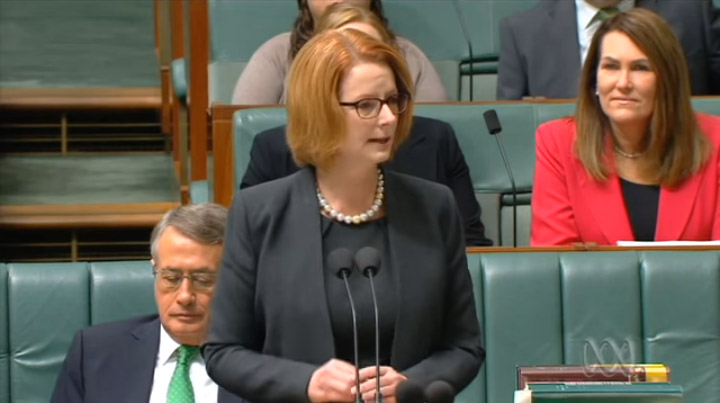
The introduction of the NDIS began across Australia in July 2016 and is being progressively rolled out with completion due in 2019-20.
The NDIS supports people with disability to build skills and capability so they can participate in the community and employment.
Reasonable and necessary support can be funded by the NDIS in a participant's plan to enable them to achieve their goals. These goals may relate to a range of domains including education, employment, social participation, independence, living arrangements and health and wellbeing.
Independent companies can now offer NDIS Plan Management and NDIS Support Co-ordination.
Deafness Forum and Hearing Disability
Deafness Forum of Australia is the peak national body representing the interests of the 3.5 million Australians who are concerned with the quality of their hearing and the effects it has on their lives and the people around them.
Deafness Forum provides balanced and realistic advice to government to inform public policy to build a fairer and more inclusive nation.
Membership includes people living with hearing loss, ear and balance disorders, people who communicate by choice in Auslan (http://www.auslan.org.au/), and their families.
Membership includes organisations that represent these people; and individuals and associations which provide services that promote hearing health and wellbeing.
Deafness Forum:
- represents and promotes the interests of members and others through national consultations, sharing information and advocacy.
- provides a forum for organisations and individuals to promote these interests; and an information channel to service providers, the wider health and disability sectors, the community and politicians.
- encourages and supports relevant research and sharing of knowledge and experiences.
- advises government on strategic policy development and reform.
(Read the handy guide and Strategic Plan at: About Deafness Forum)
The State of Hearing Loss in Australia
Deafness Forum practices the social model of disability, addressing environmental factors that inhibit their constituents' participation in society. Physical impediments in the sector include communications access, building and transport design, and hearing services affordability.
The main social factor is negative community attitudes to deafness and how this is played out to limit people's functioning in education, workforce and social settings.
Augmenting the social model is a person-centred approach recognising that hearing loss is acquired through recreational and workplace noise, illness, medications and as part of the process of ageing.
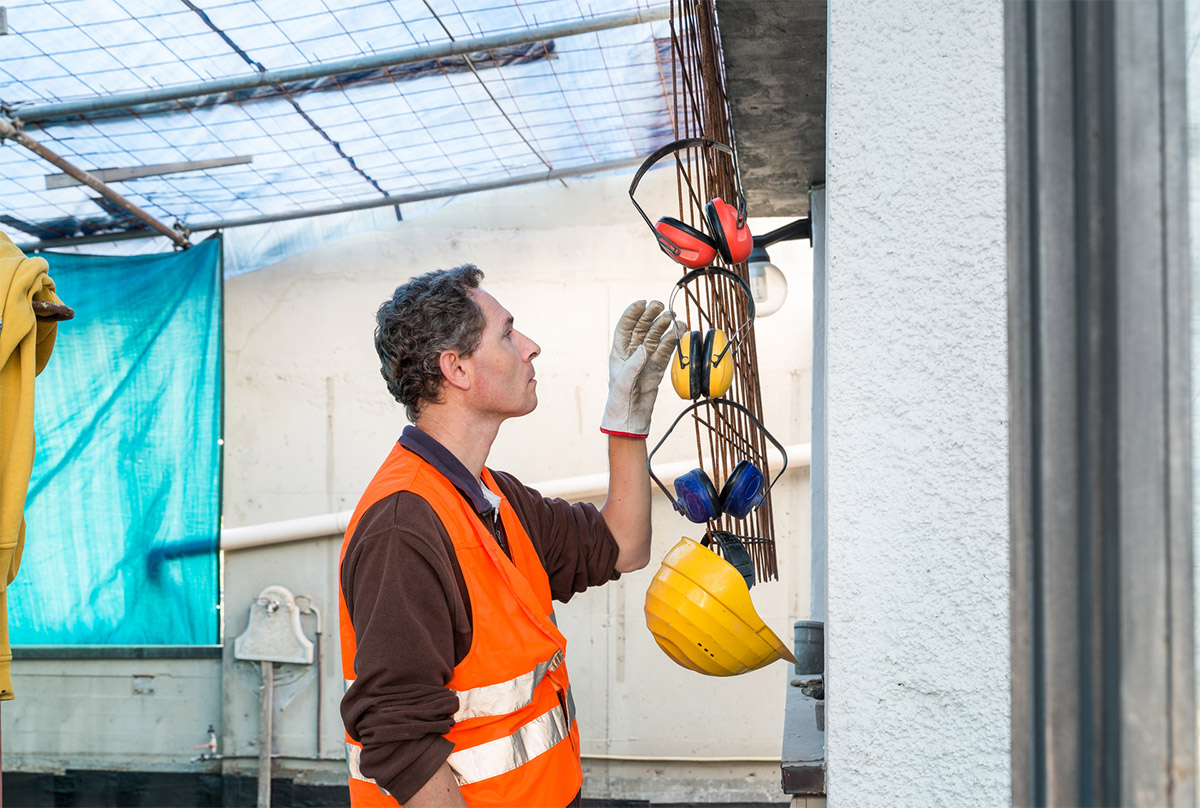
Acquired hearing loss creates social isolation and is linked to dementia and mental health issues. Identification, prevention and interventions make significant improvements to a person's capacity and functionality.
With an ageing population, hearing loss is predicted to increase to one in every four Australians by 2050. About a third of acquired hearing loss is because of noise exposure from workplace noise and leisure activities and is largely preventable. Hearing loss increases from less than one per cent for people younger than 15 years to three in every four people aged over 70 years.
About a fifth of the population live with ear disorders such as Tinnitus and Meniere's. Hearing loss is a significant economic cost to Australia − about $15 billion each year. In particular, with our ageing population, and the need for all Australians to stay productive for longer, impact of hearing loss on productivity at work must be viewed as critical.
People who want to work and who have a hearing loss, face challenges that most of their hearing peers won't be aware of. For some, the barriers are clear at or before they start looking for work and, for many, they become more important during the selection process or at work. Hearing loss can also mean people leave work sooner than they would like and before the age they planned to retire.
https://www.deafnessforum.org.au/
Hearing Loss and the NDIS
Deafness Forum was contacted by people who were confused by information on the NDIS website and in social media about the eligibility of people with hearing loss and deafness to join the National Disability Scheme.
The NDIS website has a list of disability conditions (including hearing impairment of 90 decibels and more in the better ear) that make a person eligible for the NDIS without the need to prove the impacts of the disability on their lives.
Section 24 Disability Access does not apply to people with a permanent hearing impairment of greater than 90 decibels in the better ear (across the pure tone average of 500Hz, 1000Hz, 2000Hz and 4000Hz). They do not need to demonstrate they have substantially reduced functional capacity to meet the NDIS access eligibility requirements. They already meet the disability requirements in section 24 of the NDIS Act without further assessment required.
Public confusion arose in comparing this information with what was stated in the NDIS operational guidelines (section 8.3.3).
To clarify this section: a person with a permanent hearing impairment of greater than 65 decibels in the better ear (across the pure tone average of 500Hz, 1000Hz, 2000Hz and 4000Hz) may have substantially reduced functional capacity. These people will probably be eligible to join the NDIS, but they must provide evidence that the disability results in substantially reduced functional capacity to undertake one or more of the following activities -
- communication,
- social interaction,
- learning,
- mobility,
- self-care or self-management.
A prospective NDIS participant must meet all the NDIS Act 2013 section 24 Disability Access eligibility criteria or section 25 Early Intervention criteria to become an eligible participant.
Key points
- Children and young adults under 26 years of age who receive services under the Australian Government Hearing Services Community Service Obligations Program will qualify for the NDIS.
- People who are 26 years and older with a permanent hearing impairment of greater than 90 decibels in the better ear (pure tone average of 500Hz, 1000Hz, 2000Hz and 4000Hz) are eligible to join the NDIS without the need to prove that their disability has substantially reduced their functional
- People who are 26 years and older with a permanent hearing impairment of greater than 65 decibels in the better ear will probably be eligible to join the NDIS, but they must provide evidence that the disability results in substantially reduced functional
- People who are 26 years and older and who have problems with speaking and listening may also be eligible
- A special pathway has been implemented for children, aged 0 - 6 years, with newly diagnosed hearing loss
Accessing NDIS Hearing Support
NDIS participants with a permanent hearing impairment may receive funding for assistive technology (AT) in their NDIS plan, in addition to receiving hearing devices under the Commonwealth Government's Hearing Services Program (HSP). Hearing devices provided under the HSP are fully subsidised, meaning there is no cost.
As an NDIS participant also accessing support through the HSP, you have the option of entering into a maintenance agreement with your hearing provider which covers the maintenance of your hearing device and the cost of batteries. The annual fee for the maintenance agreement would be funded in your NDIS plan.
All requests for AT support are considered on an individual basis and may be funded under the NDIS where the support is considered "reasonable and necessary" for the participant. Examples of AT support include specialised alerting systems (vibrating/ flash smoke alarm), wireless streaming devices (for the TV, phone or remote microphone), remote controls, Cochlear Implant speech processor accessories (including aqua accessories) and speech processor upgrades.
Types of Hearing Services Funded by HSP
Under the Hearing Services Program (HSP), participants receive high-quality hearing services and devices at no cost. The HSP has two components, one is called the Community Service Obligation (CSO) and the other is the Voucher Program.
Until mid-2020, the usual arrangements for the CSO and Voucher components of the HSP will also apply to NDIS participants.
The difference between the Community Service Obligation (CSO) and Voucher Program components of the HSP are as follows:-
The CSO component of the HSP funds fully subsidised hearing services and devices to:
- NDIS participants under 26 years of age with a hearing impairment;
- NDIS participants 26 years of age and over who have complex communication needs such as a profound (>90 decibels) hearing impairment, significant visual impairment in addition to a hearing impairment or other disabilities that heighten communication difficulties; this is also referred to as Specialist Hearing Services (external)
Australian Hearing is the sole provider for hearing services under the CSO component of the HSP.
The Voucher Program component of the HSP funds fully subsidised hearing services and devices to:
- NDIS participants 21 years of age and over. If you are a young adult aged 21 to 25 years (inclusive) you may choose to receive services through either the CSO or Voucher program.
- Participants can choose their provider of support under the Voucher Program of the HSP. There are around 280 contracted service providers (external) to choose from. Contracted service providers are not required to be registered with the NDIA to deliver services under the Voucher component of the HSP.
NDIS Fully and Partially Funded Hearing Devices
The fully subsidised hearing devices provided under the Hearing Services Program are considered to be of high quality technology, in the majority of cases fully subsidised hearing aids are considered to be the minimum necessary or standard level of support required, as described in the NDIS Operational Guidelines (Planning) 10.5.
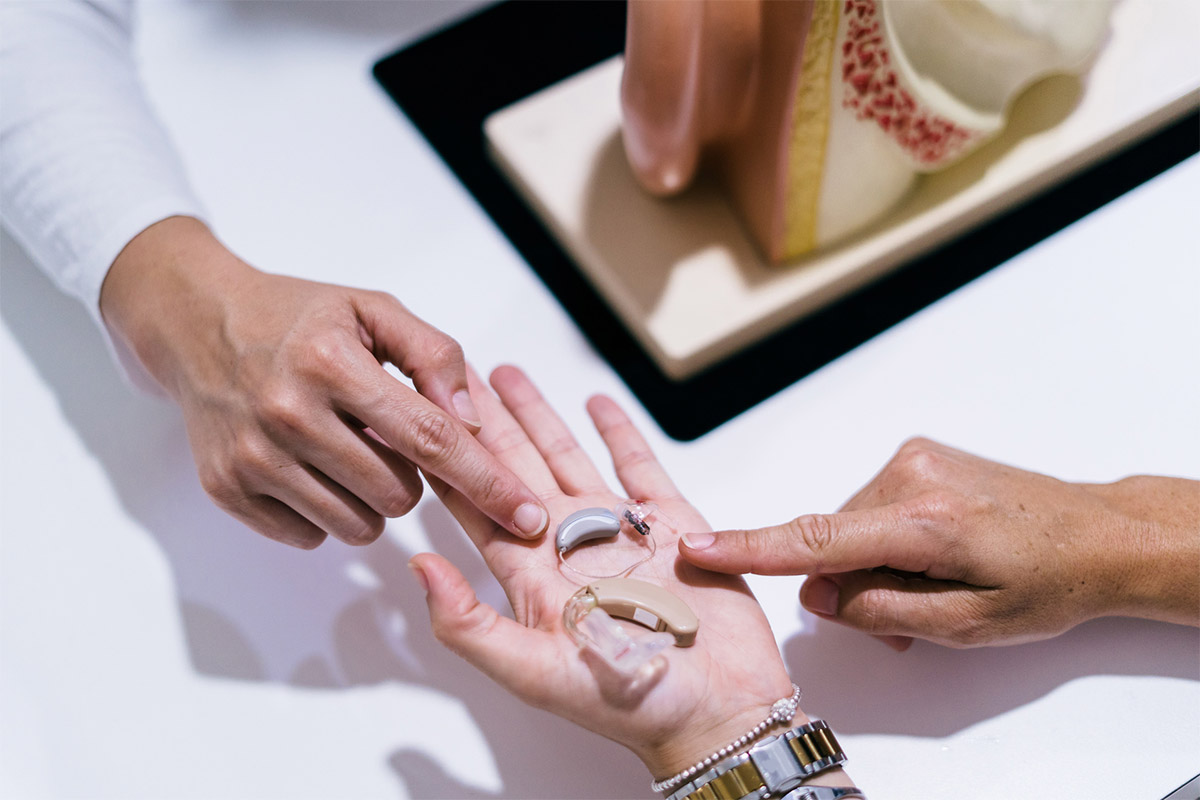
In exceptional circumstances, the NDIS will consider if the gap in funding for partially subsidised hearing devices will be funded in the participant's NDIS plan. This will depend on the individual circumstances, the additional features requested, information received from the hearing services provider and whether it is considered reasonable and necessary.
If the NDIS determines that the gap is not reasonable and necessary, the participant can choose to independently purchase the partially subsidised hearing device/s with the desired additional features or the audiologist will need to discuss other options with their client.
As the participant is choosing to pay for partially subsidised hearing aids, which do not meet the reasonable and necessary criteria, then they can simply pay the gap directly to the hearing provider from their personal funds (not using NDIS plan funding).
If the participant has private health insurance, they may consider contacting their insurer, as the insurer may contribute to the cost of the hearing aids, as part of the participant's policy.
The Hearing Services Program legislation does not allow for the reimbursement of the 'gap' payment (external) to clients. https://www.ndis.gov.au/understanding/ndis-and-other-government-services/hearing-supports
The Audiologist - where it all begins
Audiologists are health-care professionals who evaluate, diagnose, treat, and manage hearing loss, tinnitus, and balance disorders in newborn, children, and adults.
An audiologist is a clinician who has completed an undergraduate university degree and a two-year master's degree in audiology.

Audiologists are university graduates with extensive and ongoing postgraduate training in hearing sciences and human communications. Their role incorporates not just hearing assessment, hearing aid prescription, fitting and management but also rehabilitation and evaluation of more complex hearing concerns.
An audiologist performs a hearing assessment to support those applying for the NDIS. Diagnostic audiology assessments either receive a Medicare rebate or are funded through the Hearing Services Program. However, the initial audiological assessment is not funded under the NDIS.
Remember:
Deafness Forum of Australia also advocates for the needs of people with hearing impairments who do not qualify for the NDIS.
https://www.deafnessforum.org.au/
Browse Other Articles
The first site in Australia to list major brands of hearing aids and prices.
